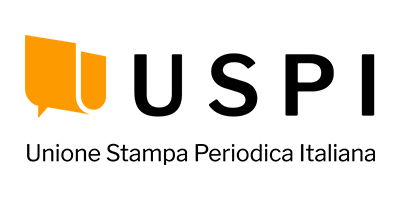Global Reconfigurable Intelligent Surfaces (RIS) Market Research 2025-2035: Examine Metasurfaces, Liquid Crystal-based RIS, MEMS-based RIS, and Emerging Approaches - ResearchAndMarkets.com
"The Global Market for Reconfigurable Intelligent Surfaces (RIS) 2025-2035" report has been added to ResearchAndMarkets.com's offering. The report delivers a meticulous analysis of the Radiative Intel...
DUBLIN: "The Global Market for Reconfigurable Intelligent Surfaces (RIS) 2025-2035" report has been added to ResearchAndMarkets.com's offering.
The report delivers a meticulous analysis of the Radiative Intelligent Surface (RIS) market, with detailed forecasts from 2025 to 2035.
This forecast is segmented by technology type, application, and geography, providing a comprehensive understanding of the market's potential growth and scope. Through a technology deep dive, the report examines various RIS technologies such as metasurfaces, liquid crystal-based RIS, MEMS-based RIS, and emerging approaches, offering a clear view of the technological advancements driving the market.
Reconfigurable Intelligent Surfaces (RIS), also known as Intelligent Reflecting Surfaces (IRS) or software-controlled metasurfaces, are artificial structures composed of a large number of small, passive elements that can be electronically controlled to manipulate electromagnetic waves. These surfaces can reflect, refract, absorb, or focus incoming signals in desired directions, effectively shaping the wireless propagation environment.
Due to recent advances in metamaterials, Reconfigurable Intelligent Surface (RIS) has emerged as a promising technology for future 6G wireless communications. Benefiting from its high array gain, low cost, and low power consumption, RISs are expected to greatly enlarge signal coverage, improve system capacity, and increase energy efficiency.
In addition to technology, the analysis includes a thorough exploration of both transparent and non-transparent reflectors, shedding light on their distinct capabilities and applications. The application landscape section details key areas where RIS technology is making a significant impact, including 5G/6G networks, IoT, smart cities, autonomous vehicles, and aerospace communications. This section highlights how RIS is integral to advancing these fields by improving communication efficiency and capabilities.
The competitive landscape is well-articulated, featuring profiles of leading companies and emerging players in the RIS sector. It delves into their technologies, strategies, and market positioning, providing insights into how these companies are shaping the industry and their relative standings in the market.
RIS technology offers revolutionary capabilities in manipulating electromagnetic waves, enabling enhanced coverage, capacity, and energy efficiency in wireless networks. As 5G networks expand and 6G development accelerates, RIS is expected to play a crucial role in overcoming current limitations in wireless communications. Key applications span telecommunications, smart cities, Industrial IoT, healthcare, automotive, aerospace, and consumer electronics. The market is driven by increasing demand for high-speed, low-latency communications, growth in IoT adoption, and the need for energy-efficient wireless solutions. However, challenges include high initial costs, technical complexities in large-scale deployment, and standardization issues.
Finally, the report provides a future outlook that assesses emerging trends, potential disruptions, and the long-term prospects of RIS technology. This forward-looking analysis helps stakeholders understand the evolving dynamics of the RIS market and prepare for future developments and opportunities.
Developments in RIS technology, including:
- Integration with AI and machine learning for adaptive control
- Quantum RIS concepts pushing the boundaries of performance
- Self-configuring and self-healing RIS for enhanced reliability
- Holographic radio and terahertz communications enabled by RIS
- Market Drivers and Opportunities
- Challenges and Market Dynamics
- Technology Benchmarking and Performance Analysis
- Comprehensive comparison of different RIS technologies.
- Integration with Wireless Communication Systems.
- Environmental and Sustainability Considerations.
- Standardization and Regulatory Landscape.
Key Topics Covered:
1 EXECUTIVE SUMMARY
1.1 Overview of Reconfigurable Intelligent Surfaces (RIS)
1.2 Key Market Drivers and Challenges
1.3 Technology and Market Trends
1.4 Metamaterials key to RIS
1.5 Market Size and Growth Projections
1.6 Competitive Landscape Overview
1.7 Future Outlook and Opportunities
2 INTRODUCTION
2.1 Technology overview
2.1.1 Key features and functionality
2.1.2 Frequencies
2.1.3 Physics of Electromagnetic Wave Manipulation
2.1.3.1 Reflection
2.1.3.2 Refraction
2.1.3.3 Diffraction
2.1.3.4 Absorption
2.1.4 RIS Operating Principles
2.1.4.1 Passive RIS
2.1.4.2 Active RIS
2.1.4.3 Hybrid RIS
2.1.5 Key Performance Parameters
2.1.5.1 Reflection Coefficient
2.1.5.2 Phase Shift Range
2.1.5.3 Bandwidth
2.1.5.4 Power Consumption
2.1.5.5 Reconfiguration Speed
2.1.6 Design Considerations for RIS
2.1.6.1 Surface Element Design
2.1.6.2 Array Configuration
2.1.6.3 Control Mechanisms
2.1.6.4 Integration with Existing Infrastructure
2.2 System Architecture
2.3 Importance in Modern Wireless Communications
2.4 Advantages Over Traditional Wireless Technologies
2.5 Current Limitations and Challenges
2.6 Comparison with Other Smart Electromagnetic (EM) Devices
3 RIS TECHNOLOGIES
3.1 Transparent vs. Non-Transparent Reflectors
3.1.1 Transparent Reflectors
3.1.2 Non-Transparent Reflectors
3.1.3 By company
3.2 Metasurfaces
3.2.1 Principles of Metasurfaces
3.2.2 Types of Metasurfaces
3.2.2.1 Meta-Lens
3.2.2.2 Metasurface holograms
3.2.2.3 Flexible metasurfaces
3.2.3 Fabrication Techniques
3.2.4 Characteristics
3.3 Liquid Crystal-based RIS
3.3.1 Operating Principles
3.3.2 Advantages and Limitations
3.4 MEMS-based RIS
3.4.1 MEMS Technology Overview
3.4.2 Design and Fabrication
3.4.3 Performance Metrics
3.5 Varactor Diode-based RIS
3.5.1 Overview
3.6 PIN Diode-based RIS
3.6.1 Overview
3.7 Other Materials
3.7.1 Ferroelectric materials
3.7.2 Phase Change Materials
3.7.3 Graphene
3.8 Comparison of RIS Technologies
3.8.1 Performance Metrics
3.8.2 Cost Analysis
3.8.3 Scalability and Manufacturing Considerations
4 RIS IN WIRELESS COMMUNICATION SYSTEMS
4.1 5G
4.1.1 Overview
4.1.2 Market drivers
4.1.2.1 Coverage Enhancement Needs
4.1.2.2 Energy Efficiency Requirements
4.1.2.3 Capacity Improvement Demands
4.1.2.4 Cost Optimization Goals
4.1.3 Applications
4.1.4 RIS operation phases
4.1.5 Functionalities of RIS
4.1.6 RIS prototypes
4.1.7 5G Network Requirements
4.1.8 RIS Role in 5G Infrastructure
4.1.9 Integration with 5G Networks
4.1.10 Performance Enhancement
4.1.11 Advanced Applications
4.1.12 Implementation Challenges
4.1.13 Future Directions
4.1.14 Market and technology roadmap
4.2 6G and Beyond
4.2.1 6G Reconfigurable intelligent surfaces and metamaterials opportunities
4.2.2 RIS materials applications
4.2.3 RIS costs in volume
4.2.4 RIS formulations
4.2.5 RIS in Terahertz Communications
4.2.6 Holographic Radio
4.2.7 Intelligent Reflecting Surfaces for Satellite Communications
4.3 MIMO Systems and RIS
4.3.1 RIS-assisted MIMO
4.3.2 RIS-based Massive MIMO
4.3.3 Performance Enhancements and Challenges
4.4 Beamforming and RIS
4.4.1 Passive Beamforming
4.4.2 Hybrid Beamforming with RIS
4.4.3 Adaptive Beamforming Techniques
4.5 Energy Efficiency in Wireless Networks
4.5.1 RIS for Green Communications
4.5.2 Energy Harvesting with RIS
5 MARKETS AND APPLICATIONS
5.1 Telecommunications
5.1.1 Coverage Enhancement
5.1.2 Capacity Improvement
5.1.3 Interference Mitigation
5.1.4 Market forecast
5.2 Smart Cities and IoT
5.2.1 Urban Environment Monitoring
5.2.2 Smart Transportation Systems
5.2.3 Energy Management in Buildings
5.2.4 Market forecast
5.3 Industrial IoT and Industry 4.0
5.3.1 Factory Automation
5.3.2 Warehouse Management
5.3.3 Process Control and Monitoring
5.3.4 Market forecast
5.4 Healthcare and Medical Applications
5.4.1 Wireless Body Area Networks
5.4.2 Remote Patient Monitoring
5.4.3 Medical Imaging Enhancement
5.4.4 Market forecast
5.5 Automotive and Transportation
5.5.1 Vehicle-to-Everything (V2X) Communications
5.5.2 Autonomous Vehicles
5.5.3 Intelligent Transportation Systems
5.5.4 Market forecast (IoT)
5.6 Aerospace and Defense
5.6.1 Radar Systems Enhancement
5.6.2 Secure Communications
5.6.3 Stealth Technology
5.6.4 UAVs
5.7 Smart Home and Consumer Electronics
5.7.1 In-home Wireless Coverage Optimization
5.7.2 Device-to-Device Communications
5.7.3 Augmented and Virtual Reality Applications
6 MARKET ANALYSIS AND TRENDS
6.1 Global Market Size and Growth Projections
6.1.1 Market Segmentation by Technology
6.1.2 Market Segmentation by Market
6.1.3 Market Segmentation by Geography
6.2 Key Market Drivers
6.2.1 Increasing Demand for High-Speed, Low-Latency Communications
6.2.2 Growth in IoT and Smart Device Adoption
6.2.3 Advancements in 5G and 6G Technologies
6.2.4 Need for Energy-Efficient Wireless Solutions
6.2.5 Other drivers
6.3 Market Challenges and Barriers
6.3.1 High Initial Implementation Costs
6.3.2 Technical Complexities in Large-Scale Deployment
6.3.3 Standardization and Interoperability Issues
6.3.4 Regulatory and Compliance Challenges
6.3.5 Other challenges and barriers
6.4 Emerging Market Opportunities
6.4.1 Integration with Edge Computing
6.4.2 RIS for Satellite and Space Communications
6.4.3 Advanced Materials for RIS
6.4.4 AI and Machine Learning Integration
6.4.5 Quantum RIS Concepts
6.4.6 Cognitive RIS
6.4.7 Self-configuring and Self-healing RIS
6.4.8 Integration with Blockchain for Secure Communications
6.5 Future Outlook
6.5.1 RIS in 6G and Beyond
6.5.2 Holographic Communications
6.5.3 Space-based RIS Networks
6.5.4 AI and Machine Learning in RIS Control
6.5.5 RIS for Terahertz and Optical Wireless Communications
6.5.6 Biological and Health Implications of Large-Scale RIS Deployment
7 STANDARDIZATION AND REGULATORY ENVIRONMENT
7.1 Current Standards Related to RIS
7.1.1 IEEE Standards
7.1.2 3GPP Specifications
7.1.3 ETSI Standards
7.2 Spectrum Allocation and Management
7.2.1 Safety and Electromagnetic Compatibility Regulations
7.2.2 Data Privacy and Security Considerations
8 ENVIRONMENTAL AND SUSTAINABILITY CONSIDERATIONS
8.1 Energy Efficiency of RIS-enabled Networks
8.2 Life Cycle Assessment of RIS Technologies
8.3 E-waste Management and Recycling
8.4 Sustainable Manufacturing Practices
8.5 RIS Role in Smart Grid and Energy Management
8.6 Environmental Impact of Large-Scale RIS Deployment
9 CHALLENGES AND LIMITATIONS
9.1 Technical Challenges in RIS Implementation
9.2 Scaling Up Production and Cost Reduction
9.3 Integration with Existing Infrastructure
9.4 Performance in Complex Environments
9.5 Security and Privacy Concerns
10 COMPANY PROFILES
- Alcan Systems
- Alphacore Inc.
- Edgehog Advanced Technologies
- Evolv Technologies Inc.
- Fractal Antenna Systems Inc.
- Greenerwave
- Huawei
- Kymeta Corporation
- Leadoptik Inc.
- Lumotive
- META
- Metaboards Limited
- Metawave Corporation
- Nokia
- NTT DOCOMO
- Pivotal Commware Inc.
- SK Telecom
- Teraview Limited
- ZTE Corporation
For more information about this report visit https://www.researchandmarkets.com/r/1jcry5
About ResearchAndMarkets.com
ResearchAndMarkets.com is the world's leading source for international market research reports and market data. We provide you with the latest data on international and regional markets, key industries, the top companies, new products and the latest trends.
Fonte: Business Wire
Related news
Last News
RSA at Cybertech Europe 2024
Alaa Abdul Nabi, Vice President, Sales International at RSA presents the innovations the vendor brings to Cybertech as part of a passwordless vision for…
Italian Security Awards 2024: G11 Media honours the best of Italian cybersecurity
G11 Media's SecurityOpenLab magazine rewards excellence in cybersecurity: the best vendors based on user votes
How Austria is making its AI ecosystem grow
Always keeping an European perspective, Austria has developed a thriving AI ecosystem that now can attract talents and companies from other countries
Sparkle and Telsy test Quantum Key Distribution in practice
Successfully completing a Proof of Concept implementation in Athens, the two Italian companies prove that QKD can be easily implemented also in pre-existing…
Most read
Appriss Retail Annual Research: Fraudulent Returns and Claims Cost Retailers…
Appriss Retail, a leading provider of data and analytics solutions for reducing retail losses and combating return and claim fraud, has released the annual…
Interactive Brokers Group to Host Fourth Quarter Earnings Conference Call
$IBKR #Earnings--Interactive Brokers Group, Inc. (Nasdaq: IBKR) plans to announce its fourth quarter financial results on Tuesday, January 21, 2025, in…
7 Clients Renew Contracts for Knightscope Technologies
$KSCP #SecurityRobot--Knightscope, Inc. [Nasdaq: KSCP] (“Knightscope” or the “Company”), an innovator in robotics and artificial intelligence (“AI”) technologies…
Vektor Medical Announces 2024 Milestones: A Year of Growth, Innovation,…
#Medtech--Vektor Medical, a leader in non-invasive, AI-powered arrhythmia analysis technology, is proud to announce key milestones achieved throughout…






